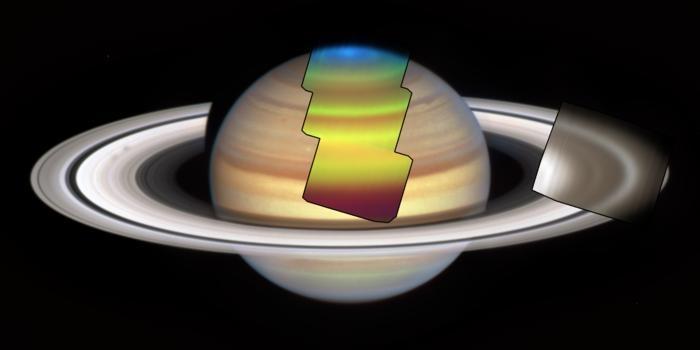Planetary scientists using the James Webb Space Telescope have trained it on Saturn to see what happens when summer turns to fall.
Earth has seasons because it rotates on a tilted axis, with each hemisphere receiving more or less sunlight as it orbits the sun. That’s the same at Saturn, though since one orbit takes 29 Earth-years each of its four seasons last for around seven Earth-years.
As it happens, it’s been summer in Saturn’s northern hemisphere since NASA’s Cassini mission—which it orbited for 13 years—ended in 2017.
Cooling Trend
With its northern autumnal equinox due in 2025, Webb was pointed at the “ringed planet” to see what happens as one season transitions into another.
In this case, Saturn’s late northern summer appears to be experiencing a cooling trend, with Webb seeing a huge flows of air reversing.
Webb also observed Saturn’s north pole, which will soon become invisible to as they enter a long polar winter.
Seasonal Changes
The new infrared images from Webb’s MIRI instrument, published in a paper in Journal of Geophysical Research Planets, allowed scientists to measure temperatures, what gases and chemicals are present, and clouds at all levels.
In the main image, above, the blue region denotes warm temperatures, with a massive cyclone—as observed in-situ by Cassini. However, what the scientists were able to tell is that the temperatures and gases in Saturn’s stratosphere right now differ to what Cassini saw in the planet’s northern winter and spring.
Breathtaking Data
So sensitive to light is Webb that it had to be pointed at only tiny parts of Saturn at any one time to prevent its detectors from being overwhelmed. The resulting images are therefore overlaid onto an image of Saturn in visible light taken by the Hubble Space Telescope.
“The quality of the new data from JWST is simply breathtaking,” said Professor Leigh Fletcher at the University of Leicester School of Physics and Astronomy in the U.K., who helped design these observations eight years ago. “In one short set of observations we’ve been able to continue the legacy of the Cassini mission into a completely new Saturnian season, watching how the weather patterns and atmospheric circulation respond to the changing sunlight.”
Whetting The Appetite
The Webb Telescope is often thought of as a tool for astrophysics, but these early results suggest that it will be just as pivotal in the field of planetary astronomy. “JWST can see in wavelengths of light that were inaccessible to any previous spacecraft, producing an exquisite dataset that whets the appetite for the years to come,” said Fletcher.
This work on Saturn is just the first of a program of observations of all four giant planets. “If we can get so many new findings from a single observation of a single world, imagine what discoveries await,” said Fletcher.
Wishing you clear skies and wide eyes.
Read the full article here










